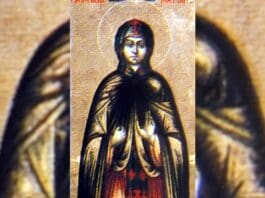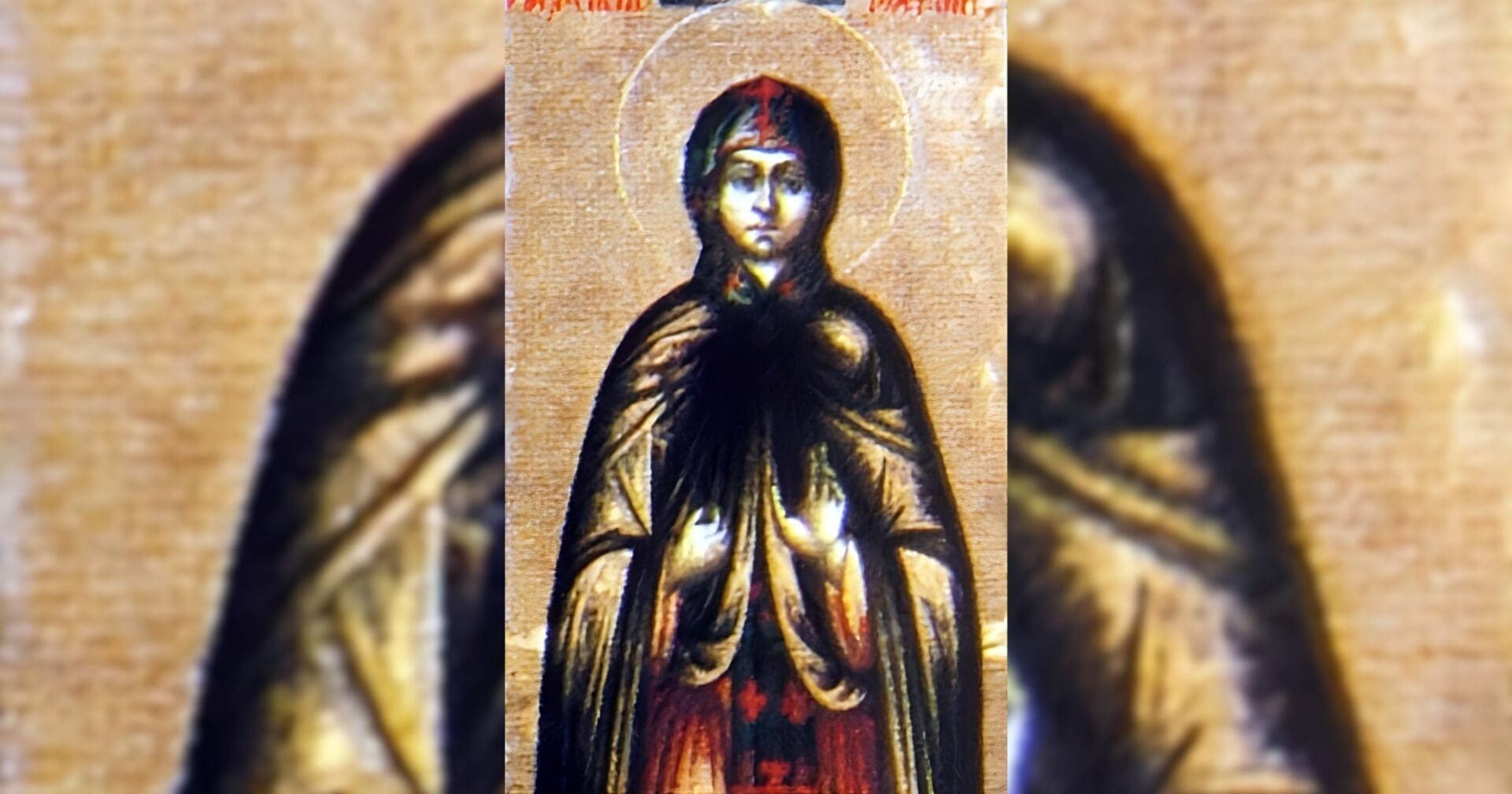
Saint Theodosia of Constantinople lived during the eighth century and was born in answer to the fervent prayers of her parents. After their deaths, she was raised at the women’s monastery of the Holy Martyr Anastasia in Constantinople. After distributing what remained of her parental inheritance to the poor, she became a nun. She also used part of the money to commission gold and silver icons of the Savior, the Theotokos, and St. Anastasia.
When Leo the Isaurian ascended the throne, he issued an edict that holy icons be destroyed everywhere. Above the Bronze Gates at Constantinople was a bronze icon of the Savior, which had been there for more than 400 years. In 730, the iconoclast Patriarch Anastasius ordered that the icon be destroyed.
The Virgin Martyr Theodosia and other women rushed to protect the icon and toppled the ladder with the soldier who was carrying out the command. The women then stoned Patriarch Anastasius.
Emperor Leo ordered the women to be beheaded. St. Theodosia, an ardent defender of icons, was thrown in prison. She was given one hundred lashes a day for over one week. On the eighth day, she was led through the city, being beaten along the way. Ultimately, one of the soldiers stabbed her in the throat with a ram’s horn, and she received the crown of martyrdom.
Following the Triumph of Orthodoxy over iconoclasm she was recognized as a martyr and saint, and The body of the holy virgin martyr was reverently buried by Christians in the St. Euphemia Monastery in Constantinople, near a place called Dexiokratis. The tomb of St. Theodosia was glorified by numerous healings of the sick.
Photo credit: Public Domain via Wikimedia Commons
The post Saint Theodosia of Constantinople appeared first on uCatholic.
Daily Reading
Saturday of the Third Week of Advent
Reading 1 Sg 2:8-14 Hark! my lover–here he comesspringing across the mountains,leaping across the hills.My lover is like a gazelleor a young stag.Here he stands behind our wall,gazing through the…
Daily Meditation
Shout for Joy! The Lord is in Your Midst!
Click here for daily readings Prior to the National Eucharistic Congress in Indianapolis last July, communities across the nation participated in Eucharistic processions in the streets, where priests carried our…




